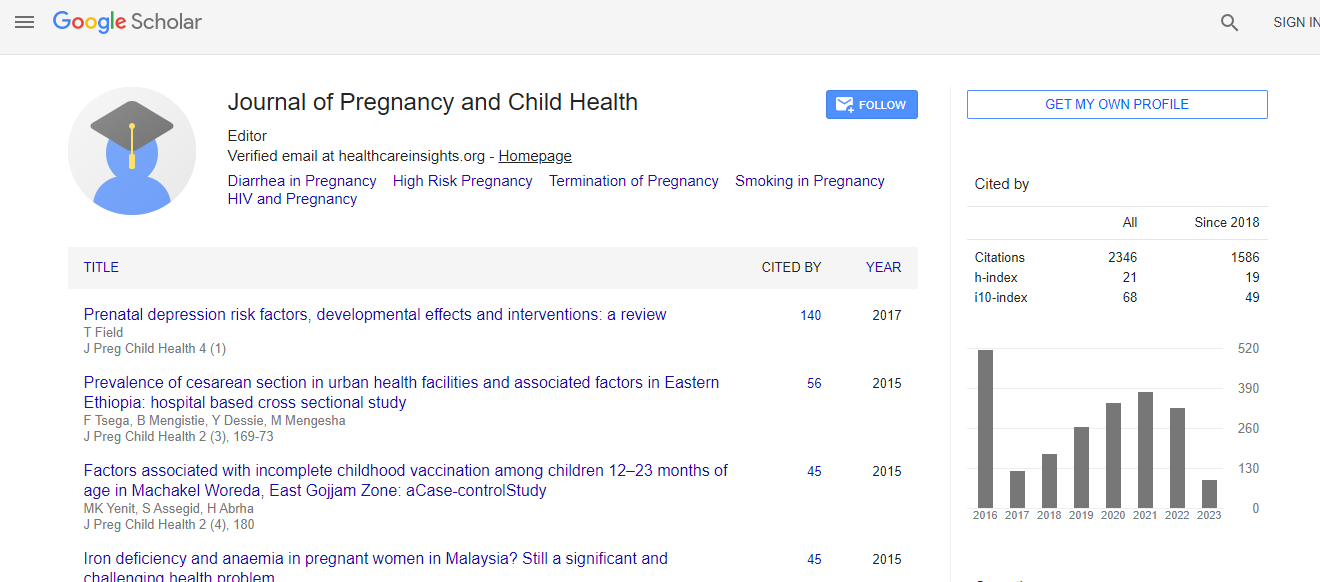Research Article
Prevalence of Cesarean Section in Urban Health Facilities and Associated Factors in Eastern Ethiopia: Hospital Based Cross Sectional Study
| Fikirte Tsega1, Bezatu Mengistie2, Yadeta Dessie2 and Melkamu Merid Mengesha2* | |
| 1Department of Pediatrics and child health, Hiwot Fana Specialized University Hospital, Ethiopia | |
| 2School of Public Health, College of Health and Medical sciences, Haramaya University, Ethiopia | |
| Corresponding Author : | Melkamu Merid Mengesha School of Public Health College of Health and Medical sciences Haramaya University, Ethiopia Tel: 251912094941 E-mail: survivalepi@gmail.com |
| Received April 09, 2015; Accepted May 25, 2015; Published May 27, 2015 | |
| Citation: Tsega F, Mengistie B, Dessie Y, Mengesha MM (2015) Prevalence of Cesarean Section in Urban Health Facilities and Associated Factors in Eastern Ethiopia: Hospital Based Cross Sectional Study. J Preg Child Health 2:169. doi: 10.4172/2376-127X.1000169 | |
| Copyright: © 2015 Tsega F, et al. This is an open-access article distributed under the terms of the Creative Commons Attribution License, which permits unrestricted use, distribution, and reproduction in any medium, provided the original author and source are credited. | |
Abstract
Background: Cesarean section (CS) is an operative technique by which a fetus is delivered through an abdominal and uterine incision. When adequately indicated, it can prevent poor obstetric outcomes and be a life-saving procedure for both the mother and the fetus. The rate of CS is increasing in developing countries despite the World Health Organization recommendation of 5% to 15% as an optimum range.
Objective: This study aimed to assess the prevalence of CS in urban health facilities and associated factors in Harar, eastern Ethiopia.
Methods: A cross-sectional study was conducted in private and government hospitals in Harar town from February 1 to March 30, 2013. A face to face interview was used to collect data by structured questionnaire. Data were entered in to computer using Epi-Info version 6 and exported to SPSS version 16 for analysis. The dependent outcome variable was delivery by CS. Multivariate logistic regression analysis was carried out to control confounding variables to identify factors associated with CS. P value <0.05 was used to declare statistical significance.
Result: The overall prevalence of CS in Hospitals in Harar was 34.3%. The prevalence of CS in private hospitals was 58.7% compared to the 26.6% prevalence in public hospitals. Higher monthly family income (AOR=3.09, 95% CI (1.42, 6.71)), big baby (AOR=3.58, 95% CI (1.11, 11.55)), previous CS delivery (AOR=50.00, 95% CI (17.76, 144.00)), and private hospital delivery (AOR=3.00, 95% CI (1.6, 5.61)) were positively and significantly associated with CS delivery.
Conclusion: Measures like interventions on prevention of unnecessary primary CS including health education for pregnant mothers on the risk of cesarean section during antenatal care visits and advocating vaginal delivery would be important to halt decrease the high prevalence in CS.

 Spanish
Spanish  Chinese
Chinese  Russian
Russian  German
German  French
French  Japanese
Japanese  Portuguese
Portuguese  Hindi
Hindi 
